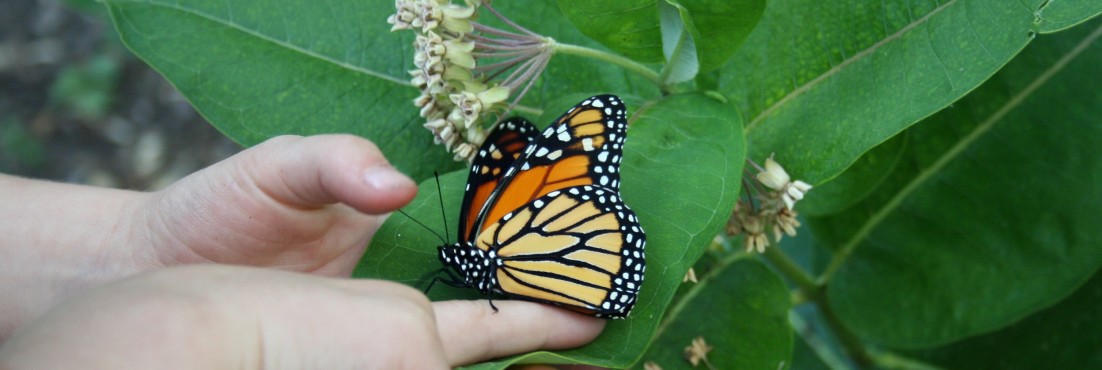Confession: I complained about our lack of snow earlier this winter. It was barely a white Christmas, with only a dusting on the ground. “This is the lamest winter ever,” I said, dreaming of cross country skiing, sledding, anything.
Welp.

Here’s my front yard after a record-breaking February of snow. It feels like the kids have barely been to school, and we’re running out of places to pile it. My herb spiral is under there, somewhere. Behind it are completely buried currants and wild roses.
The rabbits are getting really desperate, and the snow has helped them reach over some of my barriers to nibble on shrubs and young trees.

Here’s my suffering honeycrisp apple tree, planted last July. This new damage, approximately 2 or 3 feet off the ground thanks to the new snow, encircles between 1/4 and 1/3 of the young tree’s trunk (plus a small branch had its end chewed off). Were this the only damage it would probably not be fatal, but rabbits also ate the bark off the trunk closer to the ground, and that time they made it more than 3/4 (~7/8) of the way around the trunk (this was back in November, before I had the cages up).
This is called a “girdled” stem, which is confusing because “stem girdling” can also refer to roots growing in a tight circle around an improperly-planted tree.
Anyway, this tree is a goner. I plan to replace it this spring–thank goodness for the two-year “purple perks” warranty at Bachmann’s. Rabbits love fruit-bearing trees like apples (and their malus genus compatriots) and cherries, along with other members of the prunus genus—such as wild plum.

The only thing more appealing to rabbits in winter than fruit trees is native shrubs. I found this hole in the plastic fence that I put around my viburnums every fall, along with some fresh damage to some of the smaller suckering branches on the pictured shrub. I patched it up and will swap the plastic fencing next year for something more durable.

My gooseberry bushes needed a good pruning this winter/spring, so I left them unprotected to see what would happen. Rabbits don’t eat my (non-native) currant bushes, and gooseberries are related, so I wondered whether they’d be interested. Verdict: they are interested. I shall not need to do any pruning of these bushes come spring. They are very vigorous, though, so I’m not worried about them.

This tall enclosure felt like overkill when I put it around my small pagoda dogwood last fall, but now it looks like this might be one of my only shrubs that will emerge in the spring completely unscathed.
I have a handful of non-native shrubs: a magnolia and three currants (two Red Lake and one Ben Sarek black). Rabbits rarely touch these in the winter. But all my various dogwoods and viburnums are like candy to them, as well as my serviceberry and chokeberries.
In a normal winter, the cages are enough. In a record-breaking month like this, I’ll need to keep checking on things until we experience some melting.
All this damage has me re-thinking my front yard landscaping plans. Half of it was torn up for a sewer line project last year; my initial replacement plan included five new shrubs. I’m now thinking two might be more appropriate, if I’m going to realistically be able to protect them in the winter while still finding places to pile up shoveled snow.
I’m thinking about plants that give the appearance of a shrub, or fulfill the same niche as a shrub, but still die down to the ground each winter. A great native plant that fits this bill is baneberry:

(image source + more images of this plant)
There are two versions of this plant that grow in Minnesota, both poisonous but very pretty. I will mass several of these in place of at least one of the shrubs I’d hand in mind. My options are somewhat limited because this area is so shady. If I had more sun I’d also consider Culver’s Root.

I have a rare Monday off work, so I cross country skied at Fort Snelling State Park this morning. The weather was perfect: 0 degrees fahrenheit with almost no wind. I had to politely ask this one to please move and let me through; he did so begrudgingly.
Next up: seed starting for the official kick-off of vegetable garden 2019.

September 27, 2022 at 4:41 am
I live in Newfoundland and we get snow like this most winters. I’ve found a Swedish product called Plantskyd to be really useful. It was developed to keep moose from eating tree seedlings being grown for forestry. It’s not for vegans. It’s made of powered slaughterhouse offal and it convinces the herbivores that there’s a predator in the area. You paint your tree trunks in the fall. I save the net bags from onions for my smaller trees. It’s a constant winter problem for me and I have lots more to say.